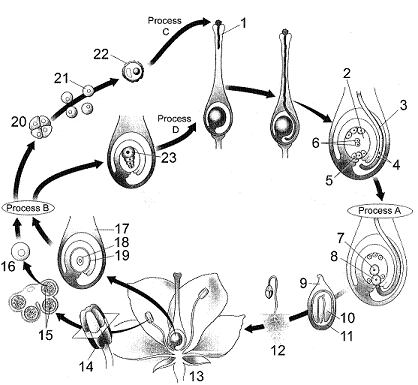Consider the following: on an annual basis, C exchange from photosynthesis is 120 Gt, decomposition is 60 Gt, respiration is 60 Gt, ocean uptake of CO2 is 92 Gt of C, ocean release is 91 Gt of C, release of C to the atmosphere from anthropogenic
sources (fossil fuel use and land use change) is 6 Gt, and the atmosphere is increasing by 3.2 Gt of C. If terrestrial processes are responsible for the remaining C for net balance of the C cycle, then which of the following is likely? A) The terrestrial surface is a net sink of 1.8 Gt of C.
B) The terrestrial surface is a net source of 1.8 Gt of C.
C) The terrestrial surface is a net sink of 2.8 Gt of C.
D) The terrestrial surface is a net source of 2.8 Gt of C.
A
You might also like to view...
A fetus can get an infection when a pathogen in the mother's blood is capable of crossing the placenta to the fetal circulation and tissues.
Answer the following statement true (T) or false (F)
In Figure 28-2, the zygote is the structure labeled:

a. 1.
b. 4.
c. 8.
d. 17.
e. 21.
In all animals, the largest percentage of the body's fluids are located in the:
A. intracellular compartment. B. plasma. C. hemolymph. D. extracellular compartment. E. interstitial fluid.
What two monosaccharides combine to form lactose?
a) glucose and galactose b) glucose and fructose c) 2 galactose molecules d) 2 glucose molecules e) galactose and fructose